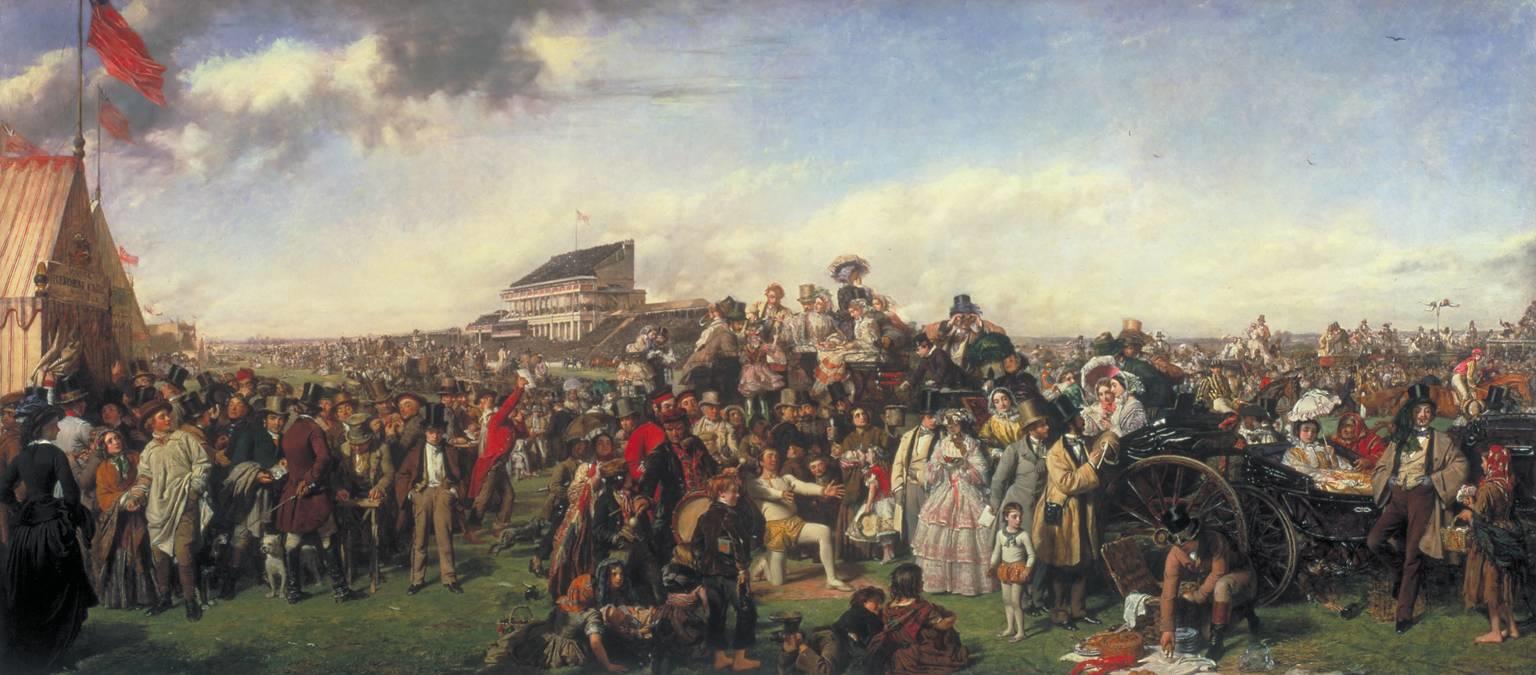
Description
William Frith’s painting The Derby Day depicts the Epsom Derby through a panoramic view. Measuring at 1016 x 2235 mm, the oil on canvas painting portrays different social aspects of the Victorian society. There are three major scenes in the foreground. In the left scene, there is a tent surrounded by seemingly rich gentlemen. A thimble-rigger is busy convincing the men to gamble at his table and beside him is a man with hands in his pockets. The man seems to be the latest victim of the game as he seems desperate and somehow stranded.
To the extreme left, a woman holds her husband in an attempt to restrain him from joining in the gambling activities. The scene at the centre of the painting depicts an acrobat and his son preparing for a show. However, the young boy is obviously distracted by a man displaying some delicacies nearby. Around the acrobat’s space is a group of spectators from different social backgrounds.
The seemingly affluent members of the audience get positions in readiness for the spectacle on top of their chariots. The poor are seated on the ground surrounding the acrobat. The scene at the extreme right portrays a well-dressed man leaning on a wagon carrier where two ladies are seated. A young poor girl is busy selling her wares to the man who seems less concerned. In the background, several groups of people are busy with their various activities. There is a concrete building to the left and the crowds of people extend to the horizon in a linear perspective.
Analysis
The Derby Day, 1856-8 by Frith is an excellent piece of composition that utilizes nearly all the art elements. The three main scenes create a symmetrical balance within the composition. Despite it depicting different active forms, the painting achieves harmony through the different colors applied. The dark colors are used to suggest a gloomy weather (Gombich 411).
Dark clouds are depicted over the left scene. These dark clouds may symbolize the harms of the activities the people are participating in. The painting combines both organic and geometric shapes. Several colors have been used in the painting to depict the different clothes worn by the people. While women are depicted as favoring lighter colored clothes, the men mainly appear in brown and other dark colors.
The overall texture of the painting is rough adding to the understanding of the many implied social differences between the presented figures. However, while the clothes of the rich appear more smooth and sharp, those of the poor appear to be extremely creased adding to the textural contrasts.
Interpretation
The objective of the painting seems to be the artist’s attempt to display the different social backgrounds of the people in Victorian England. By placing the three scenes that depict these social disparities, the artist was presenting a platform on which the lifestyles of the poor could be contrasted to those of the affluent. The portrayal of a poor boy being distracted by the delicacies of the rich was a deliberate attempt by the artist to portray the kind of relationship that exists between the rich and the poor in a diverse society (Gombich 412).
The poor envy the rich while the rich seem to disregard them. The man in the extreme right scene was obviously disregarding the poor girl trying to sell him some merchandise. The implications of some activities such as gambling to the society are also portrayed in the painting. While a young man agonizes after being fleeced by the thimble-rigger, another man was being restrained by his wife not to take part in the gambling.
Works Cited
Frith, William. The Derby Day, 1856-8. Tate Gallery. London. Tate Gallery.
Gombrich, Eric. The Story of Art. 25th ed. London: Phaidon Press. 2010. Print.